Your hands are the main points of contact when it comes to controlling your bike. Whilst there’s no grip that can really be called “bad”, there are most definitely some grips that are more suitable to some riders than others.
You may not have really thought much about how grips vary so even just reading this guide should enlighten you a bit. Every day’s a learning day etc.
Up until about ten years ago there was only one basic type of grip; grips that you simply slid on to your bar. Well, we say “simply”. In reality this often involved a right old wrestling match trying to get the grips fully on to the bars.
Nowadays almost all mountain bikers use Lock-on grips. Grips with a firm inner sleeve and a bolted collar at one or both ends of the grip to hold the grip in place on the bars.
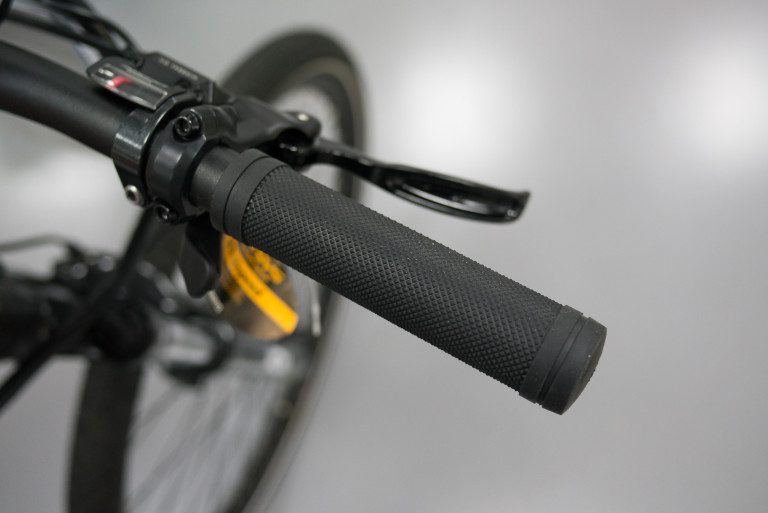
Traditional grips
Good points:-
Light. Cheap. Available in very skinny versions.
Bad points:-
Difficult to install. And remove. They can squirm, spin around and slide off the handlebar. Often made of harder rubber which is slipperier and harsh.
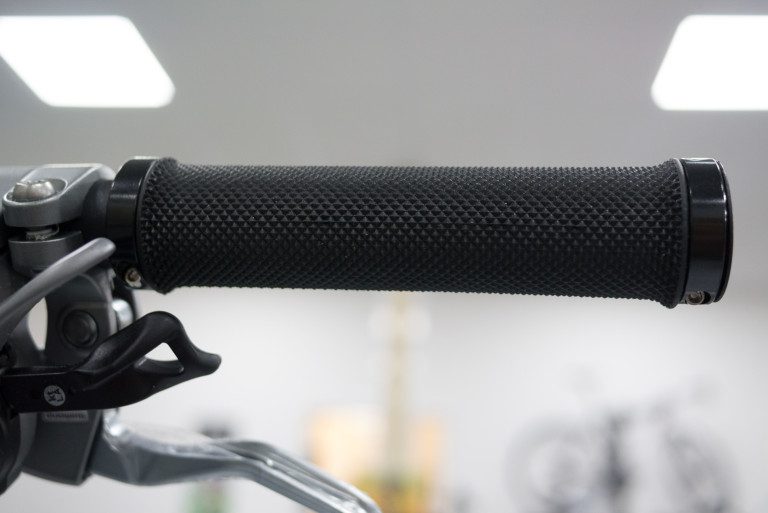
Lock-on grips
Good points:-
They’re easy to install. And remove. They don’t squirm or spin around or slip off your handlebar. They stay put.
Bad points:-
You can’t get really skinny Lock-on grips. They’re more expensive than slip-on grips. Some people find the metal collars uncomfortable on the edge of their palms. The outboard metal collar can scratch car paintwork when leaning your bike up against your car(!)
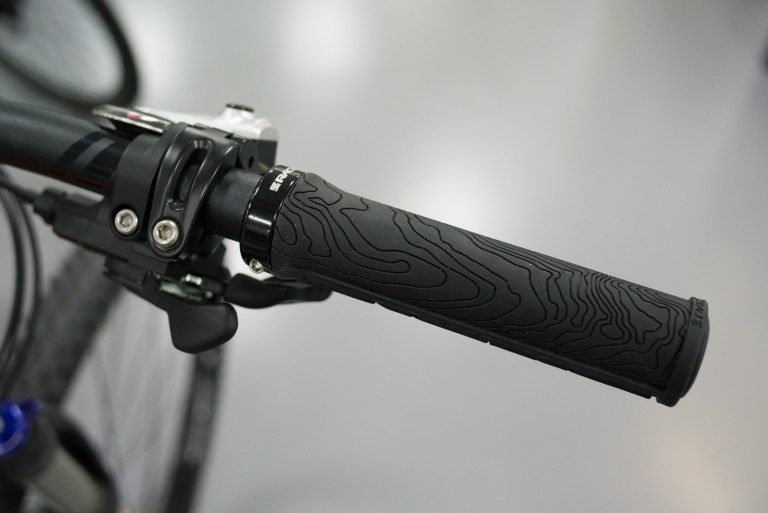
Lock-on variations
There are different variants of Lock-on grip. Most have a bolted collar at each end of the grip. Some have just one bolted collar (on the in-board end). By only using one collar it gets rids of the aforementioned palm-edge discomfort issue.
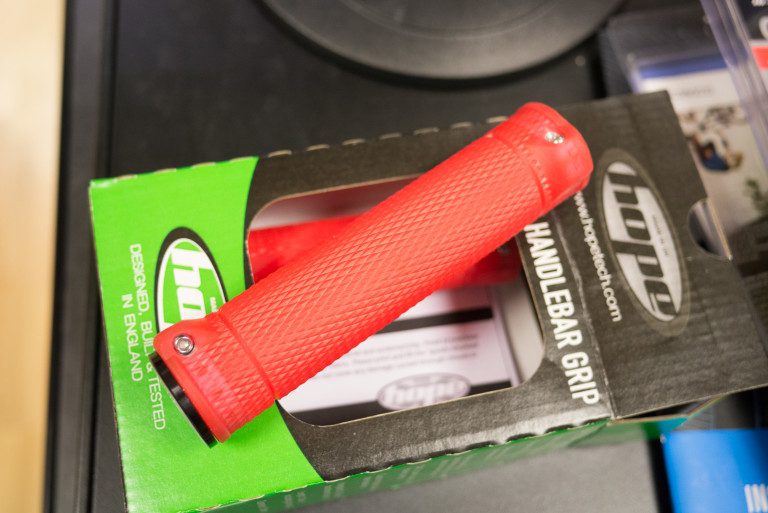
Most Lock-on collars are exposed metal. Hope’s grips have sleek metal collars that are entirely covered over by the grip rubber – a very good idea but one that costs a bit more money.
The other cunning thing about Hope Lock-on grips is that the collars are off-set against each other, which results in the outboard bolt head bump being away from your hand whilst the in-board bolt-head is still easily accessible away from brake lever or shifter body clutter.
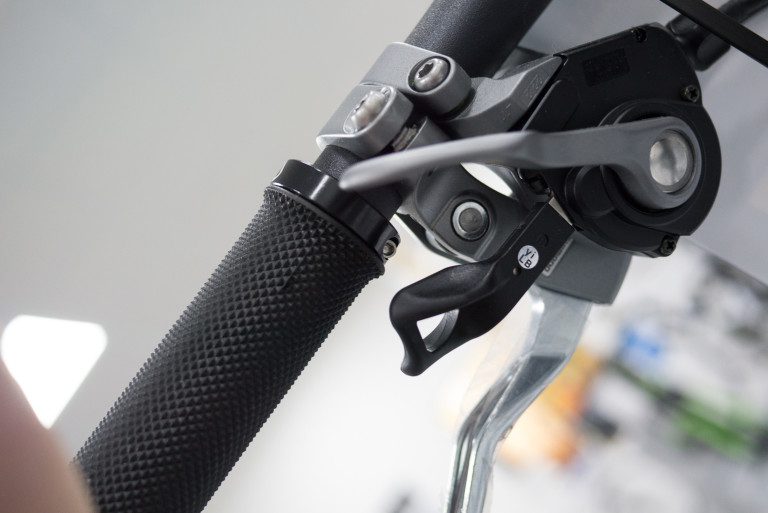
The size of the collar bolt head is either 2.5mm or 3mm Allen key. 2.5mm is the more common. 3mm is the better option in my experience, principally because they are much less likely to ’round out’ by clumsy tool handling.
Fat versus thin
Some riders opt for fat grips, the thinking being that they’ll offer the most cushioning and therefore comfort. This is often not the case. As with saddles, more padding doesn’t make for more comfort.
If your grips are too chunky you’ll find them difficult to hold on to and the subsequent panic-deathgripping will be tiring and uncomfortable.
If you have very small hands then by all means try the skinniest grips you can find. If you can’t find any super slim grips then you can take a leaf out of some pro riders’ books and use roadie bar tape instead.
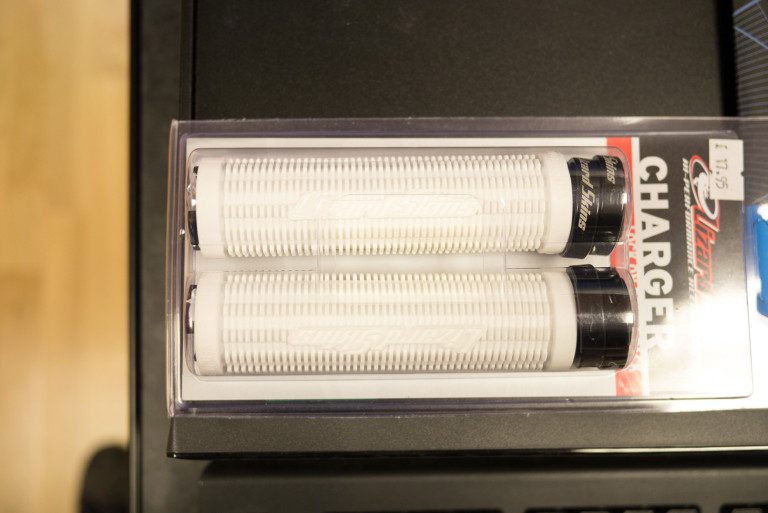
Likewise if you genuinely have shovels for hands then go for some slightly fatter grips.
Tread pattern
Now then. Now we’re into the proper ‘arguing the toss’ territory. I’m of the opinion that tread pattern doesn’t really matter as much as people harp on about.
‘Back in the day’ there used to be much more variation in grip tread pattern. Fins, wedges, gills, ribs, knobbles, stars, holes… you name it, there was some wacky grip using it somewhere.
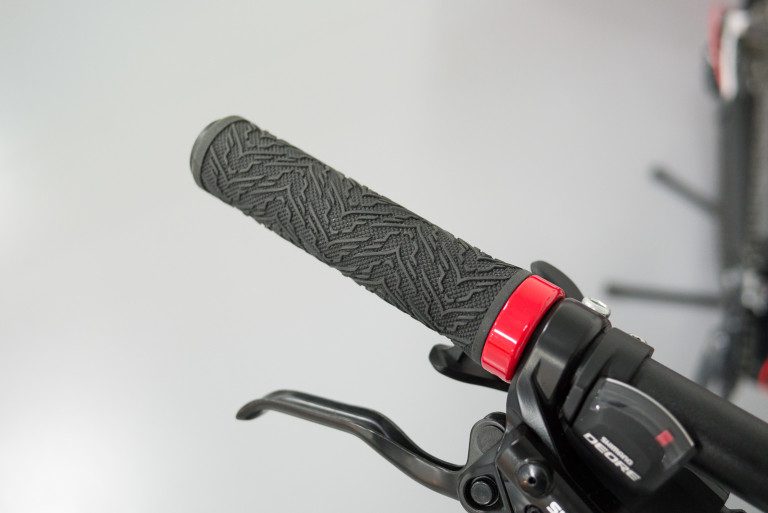
Nowadays most grip designers have gone for the less-is-more approach. A bit of file tread here, some minimal light rippling or finning there.
There’s a reason for this minimalist approach – it works. You don’t need very knobbly grips in order to keep hold of your bars, even in the filthiest of conditions.
You don’t want completely smooth grips – they would be slippery – but you only really need a modest of detailing. This is especially true on the palm-side of the grip.
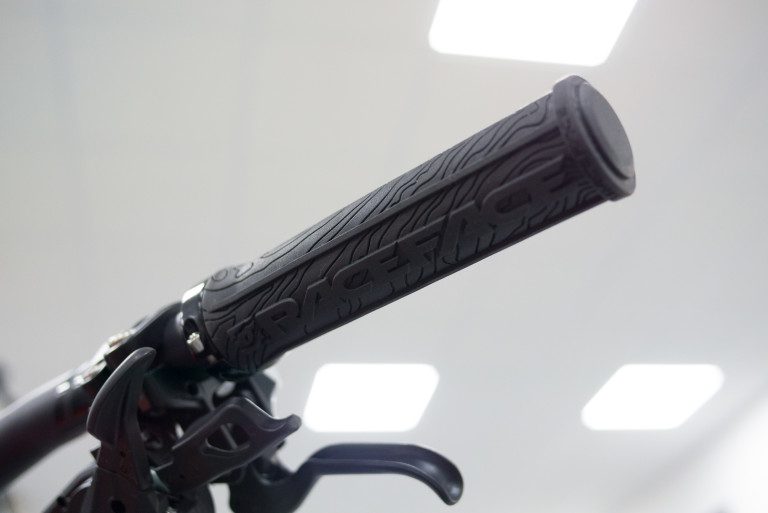
Some aggressive riders do like to have some edges on the back/under side of the grip (where the fingers lie) for increased purchase when riding extremely ragged terrain in furious ways.
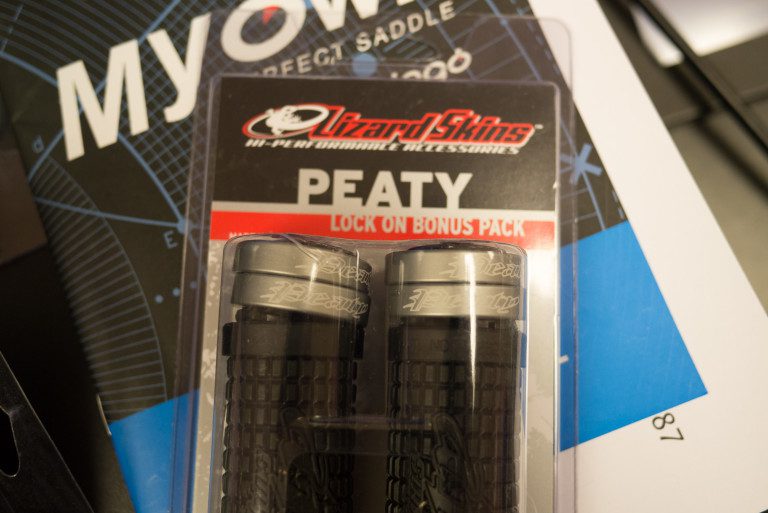
Hard or soft
The firmness or softness of the rubber used in the grip is important. Since the widespread adoption of Lock-on grips, grip rubber has got a bit softer. We no longer have to worry about soft grips squirming/spinning on the handlebar.
It’s this increase in softness that has seen the death of knobbly grips. It’s soft rubber that makes grips grippy, not knobbly tread patterns.
There is a trade-off in durability with soft grips. They wear out – especially at the outboard end. If the grips only use a single collar (on the in-board end) you’ll probably notice the un-collared outboard end of the grip getting a bit scruffed up and tatty after a while.
Pretty much all modern Lock-on grips use softish rubber so don’t worry if you can’t see it written in their description. Any grips that makes of point of saying that it’s soft will be REALLY soft. Which is fine for downhillers and racers but a lot of regular riders will find that they wear out just a bit too fast.
Which grips should you buy?
I reckon it’s best for most folk to go for a slimmish grip. Ideally Lock-on. Fat grips can be tempting but in my experience they end up being uncomfortable after a few miles. Thin grips don’t fatigue your forearms and hands.
Thinner grips also give you much better bike feel and handling. It sounds a bit “yeah yeah whatever” but you’ll be surprised by how much more in control you feel compared to fat grips.
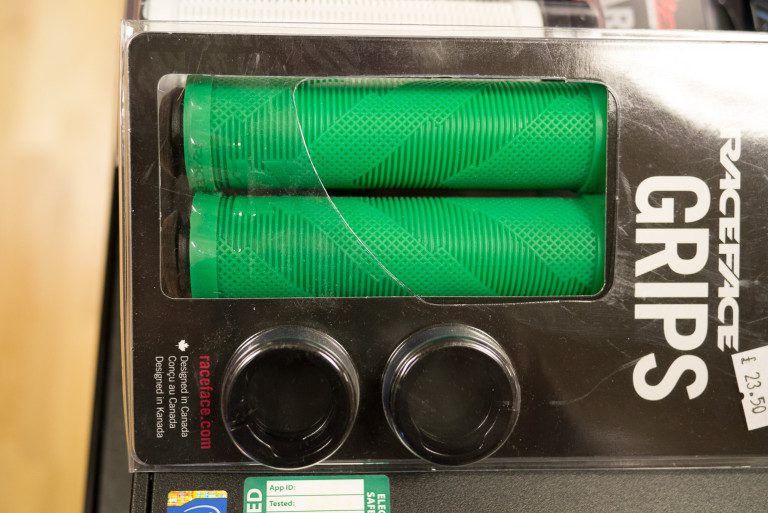
If you have the budget then Hope’s grips are excellent. Otherwise, if you want to know what I use, then Race Face are the current grip champs.
The colour you go for is entirely up to you.
